Weed war at Anza-Borrego Desert State Park
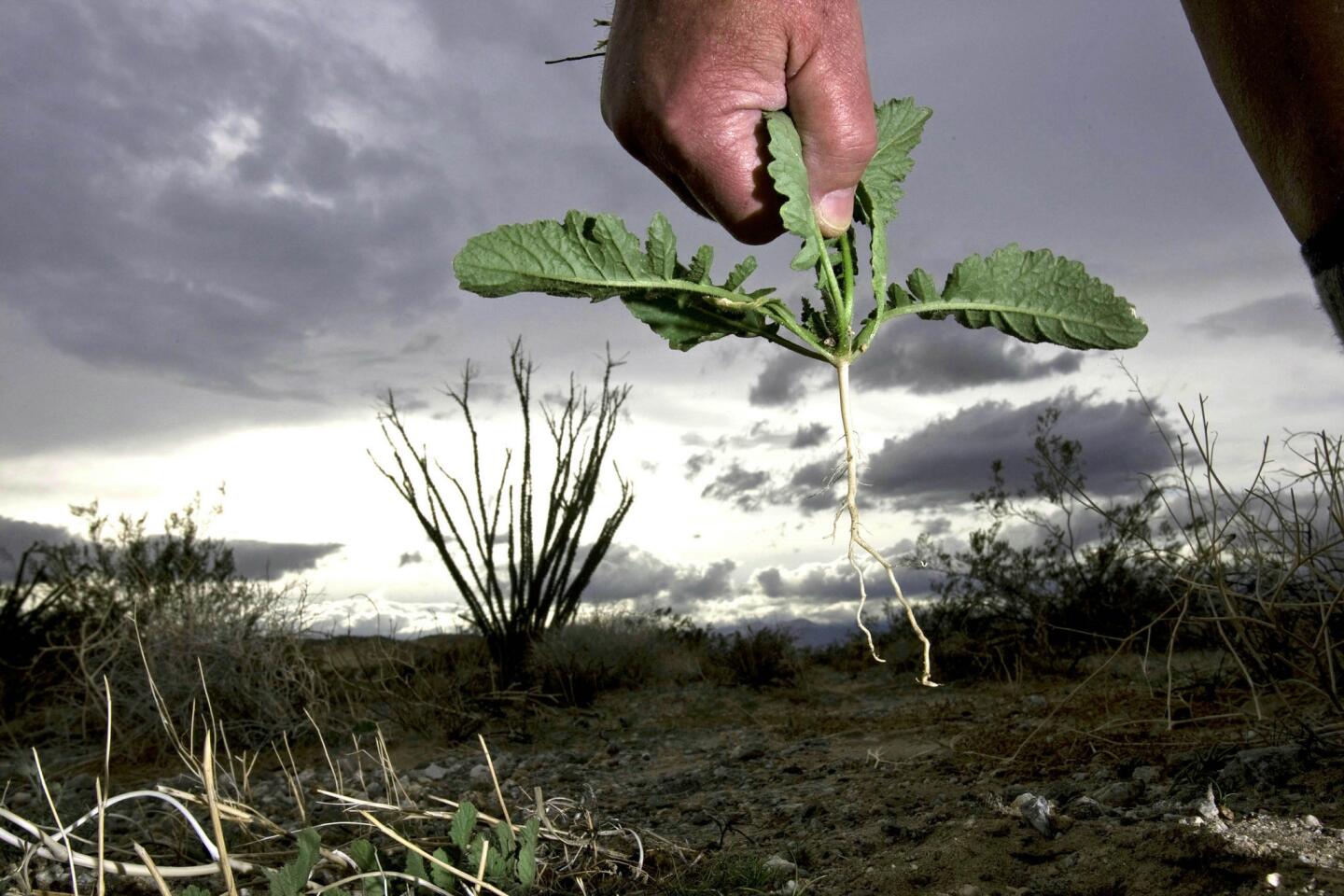
Jim Dice, reserve manager at UC Irvine’s Steele/Burnand Anza-Borrego Desert Research Center, pulls up a Sahara mustard plant. Efforts to eliminate the mustard have been unsuccessful. “It’s everywhere,” a part-time resident of Borrego Springs lamented as he strode through once-pristine Tubb Canyon on the western edge of town. (Allen J. Schaben / Los Angeles Times)
A noxious non-native weed has overrun the once vast expanses of native flowers that draw thousands of visitors to Anza-Borrego Desert State Park this time of year. Now, the community of Borrego Springs is on a war footing, with research scientists and locals working together to try to stop the Sahara mustard’s advance.
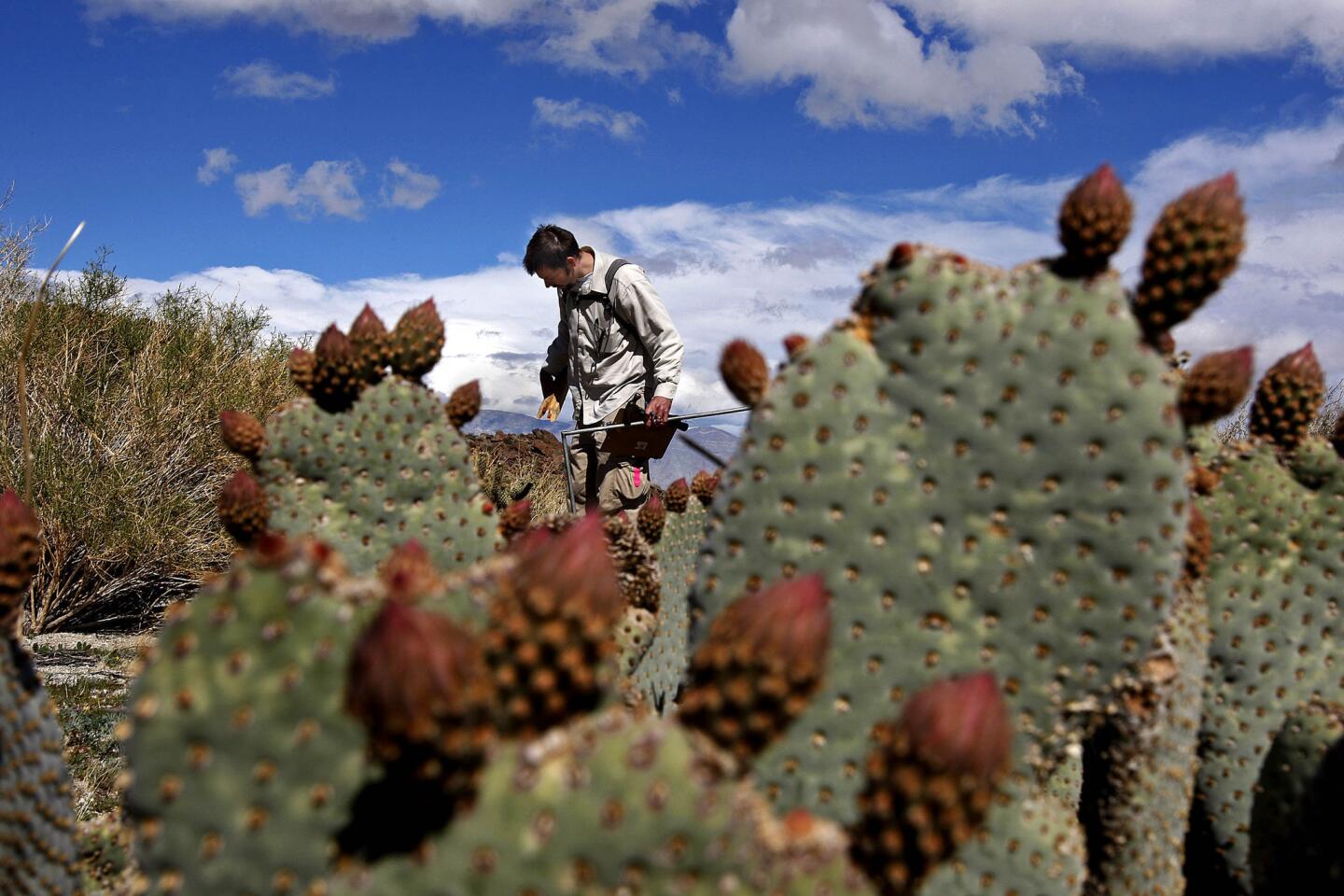
Chris McDonald, desert natural resources advisor with the UC Cooperative Extension, makes his way past cactus as he searches for invasive Sahara mustard plants that are crowding out native wildflowers on private property in Tubb Canyon, adjacent to Anza-Borrego Desert State Park. (Allen J. Schaben / Los Angeles Times)
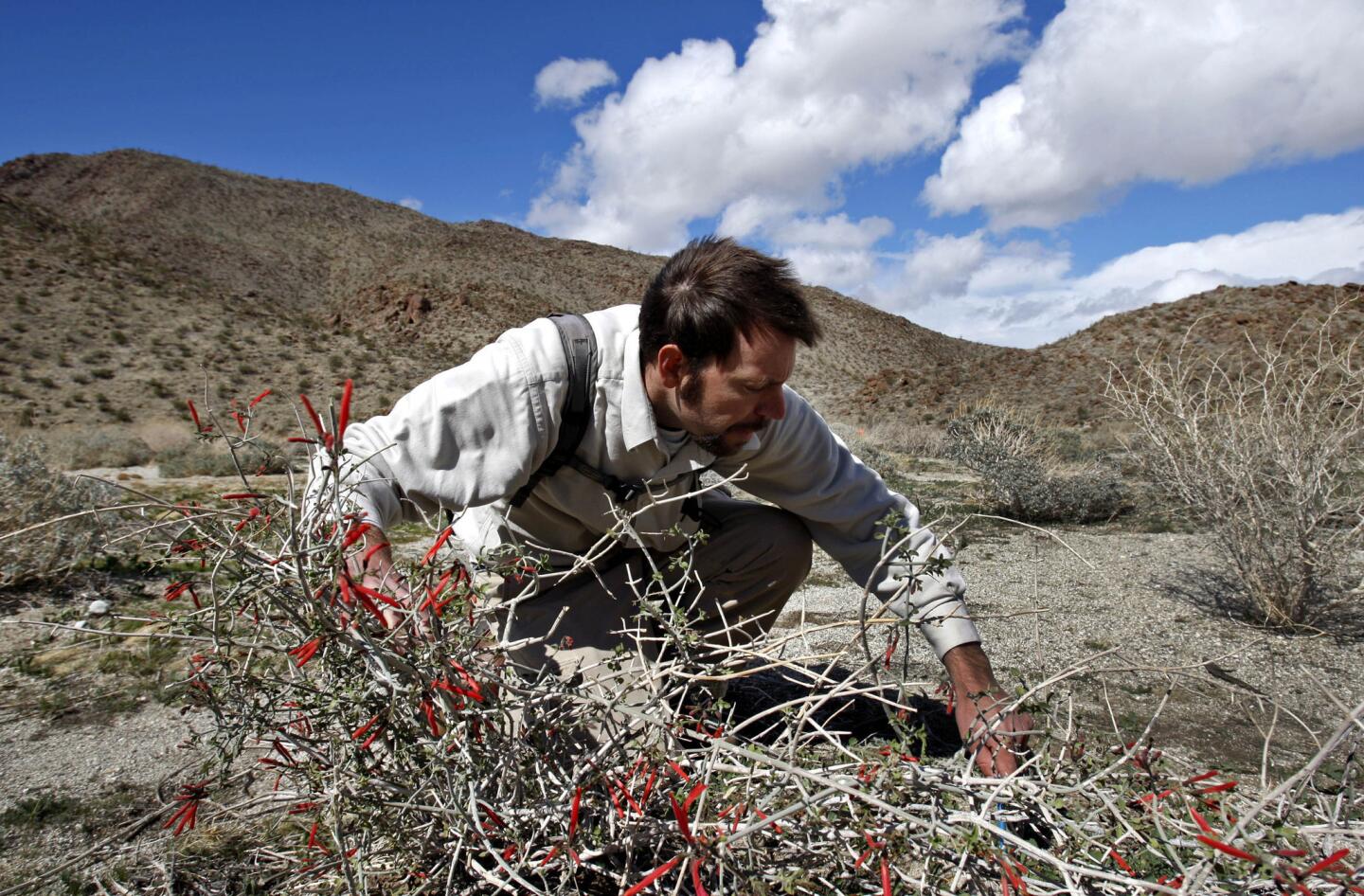
Chris McDonald with the UC Cooperative Extension inspects chuparosa, a native flower that is being crowded out by rapidly spreading Sahara mustard in Anza-Borrego Desert State Park. The invasion has prompted Borrego Springs to downplay its image as a quaint town surrounded by seas of wildflowers rippling in the desert breeze. (Allen J. Schaben / Los Angeles Times)
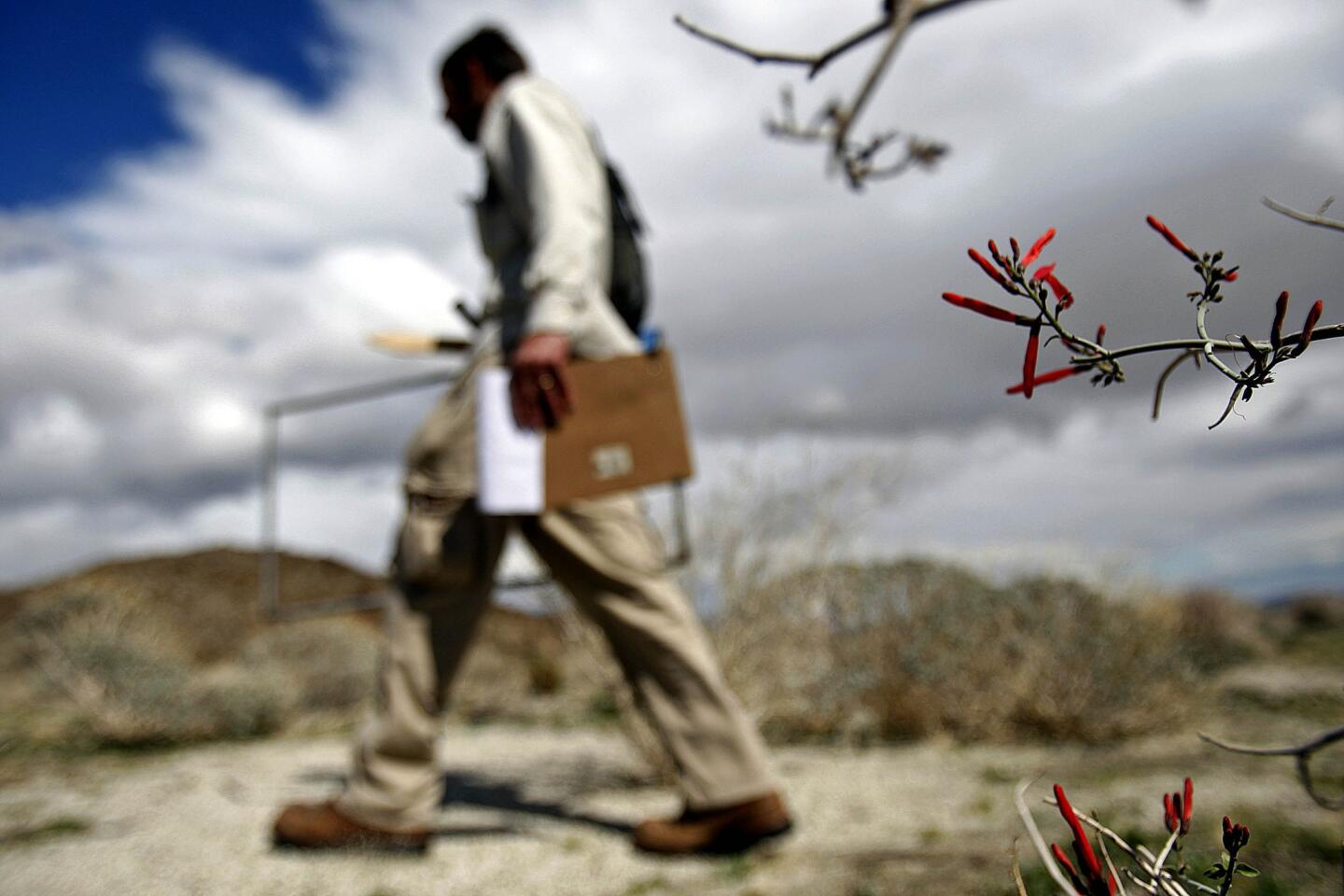
Chuparosa, a native wildflower, sways in the wind as Chris McDonald continues to look for the invasive non-native Sahara mustard. “We’re learning to compete with the mustard,” said Fred Lee, a Borrego Springs resident and former Anza-Borrego Desert State Park ranger. “If we don’t adjust, we’ll dry up and blow away.” (Allen J. Schaben / Los Angeles Times)
Advertisement
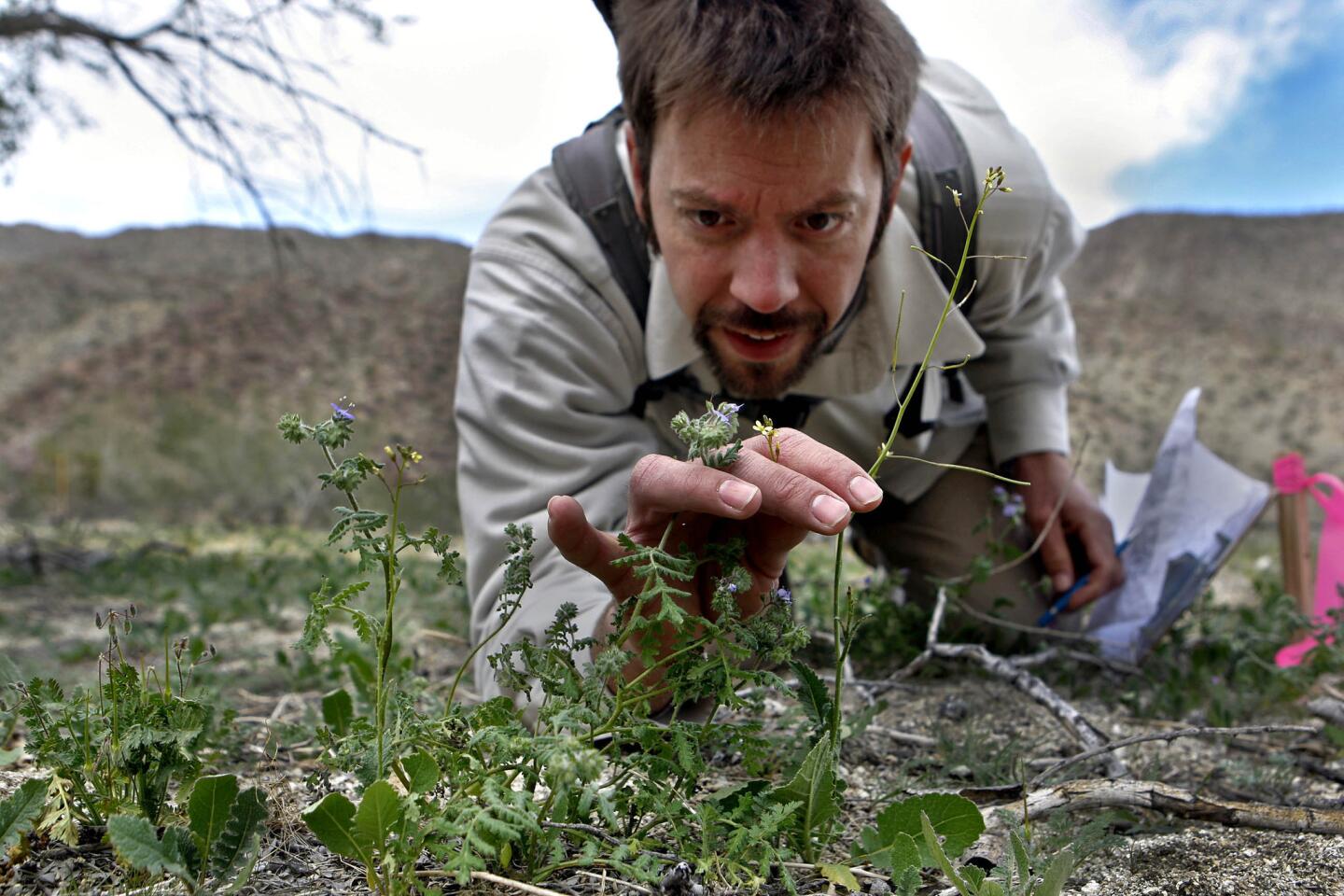
Chris McDonald inspects a Sahara mustard plant, right, that is crowding out a native scorpion weed on private property in Tubb Canyon. “We love wildflowers because they are beautiful and part of the landscape we cherish ¿ but they do not define us,” said Linda Haddock, executive director of the Borrego Springs Chamber of Commerce. “The mustard is forcing us to change to course. We¿re repositioning ourselves and diversifying our base.” (Allen J. Schaben / Los Angeles Times)
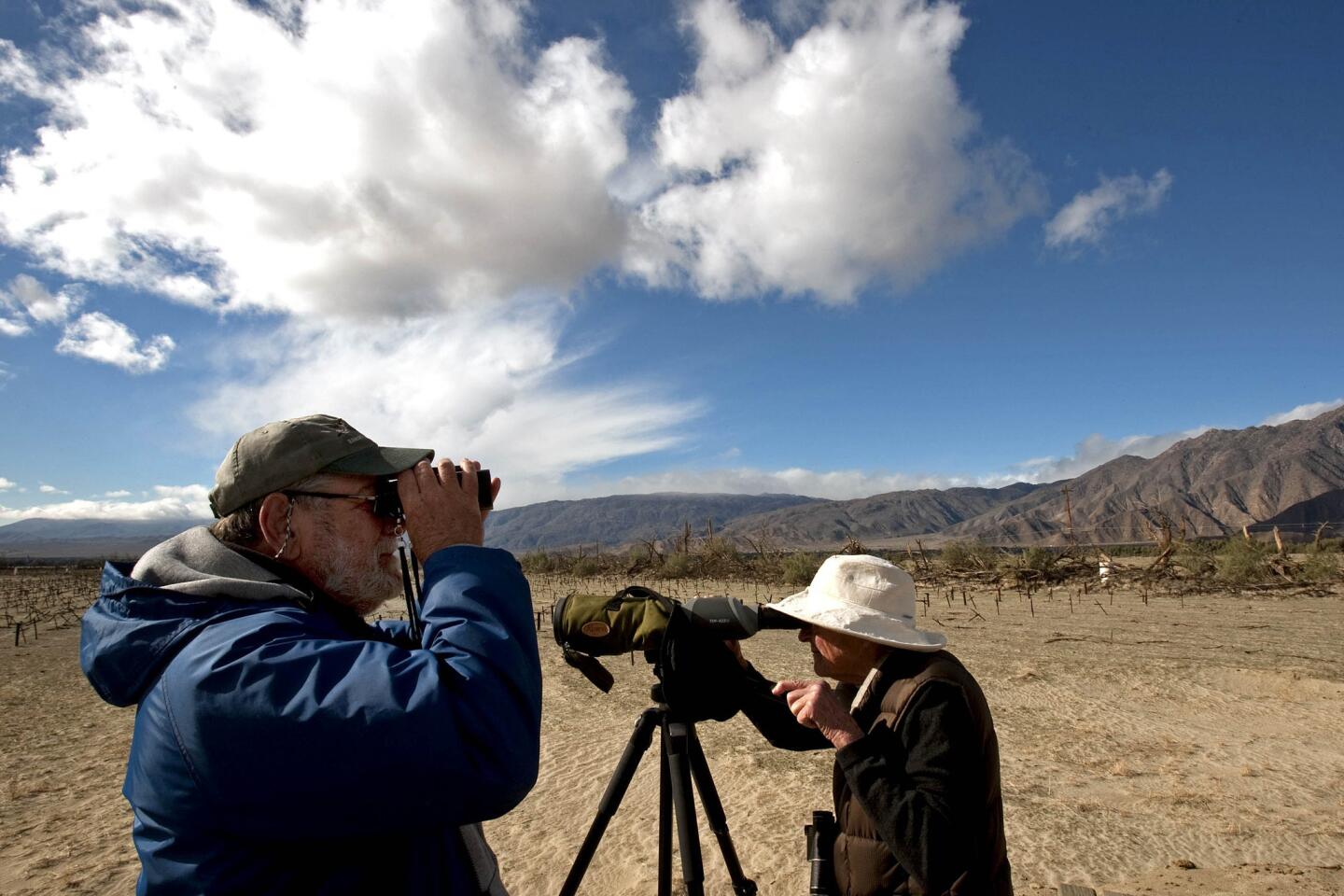
Borrego Valley Hawkwatch members Herb Stone, left, and Barbara Massey look for migrating Swainson’s hawks after a winter storm passed through Anza-Borrego Desert State Park. The locale, once best known for its wildflowers, is believed to be one of the most populous sites for the hawk in North America. (Allen J. Schaben / Los Angeles Times)
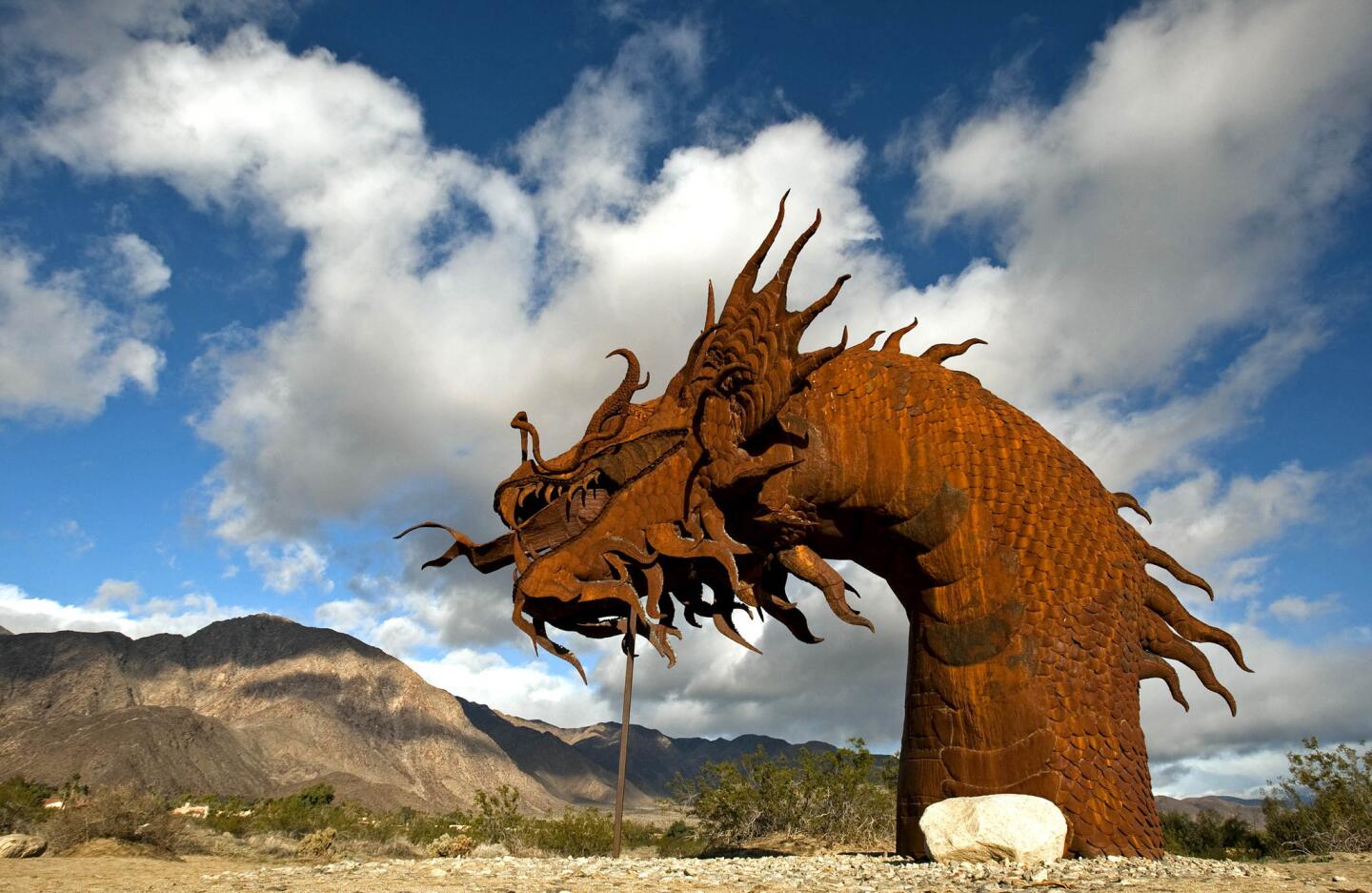
A 350-foot-long dragon is among the menagerie of metal sculptures created by artist Ricardo Breceda that are on display in Borrego Springs. For the first time in memory, the town’s Village Guide, a free brochure given to visitors, does not feature images of wildflowers on its cover. Instead, the 2013 edition shows Breceda’s huge creature. (Allen J. Schaben / Los Angeles Times )
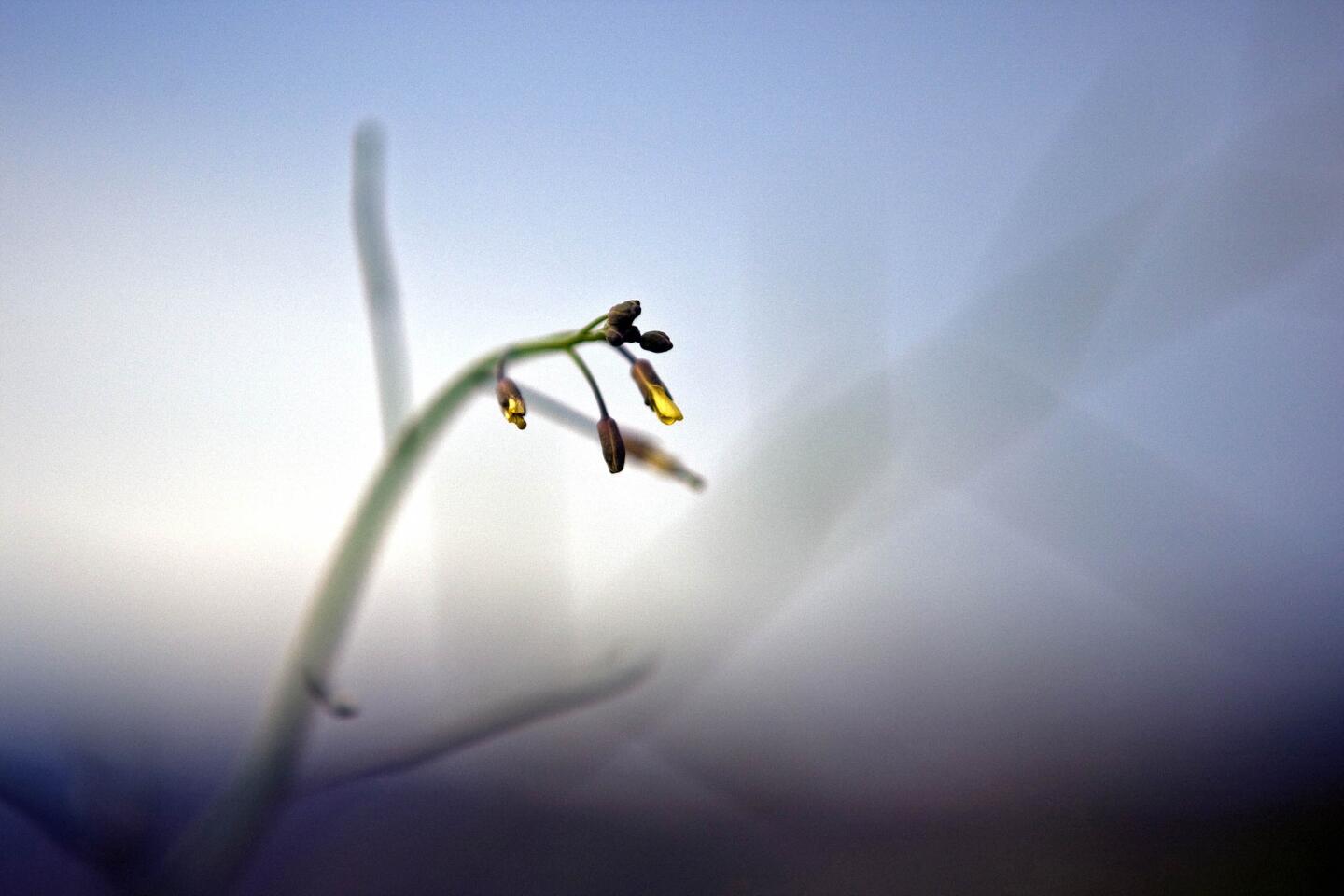
A Sahara mustard plant looms over nearby native wildflowers in Anza-Borrego Desert State Park. Sahara mustard made its way to the American Southwest with imported date palms in the 1920s. Since then, it has spread from Central California to Texas and from Colorado to Mexico. (Allen J. Schaben / Los Angeles Times)
Advertisement
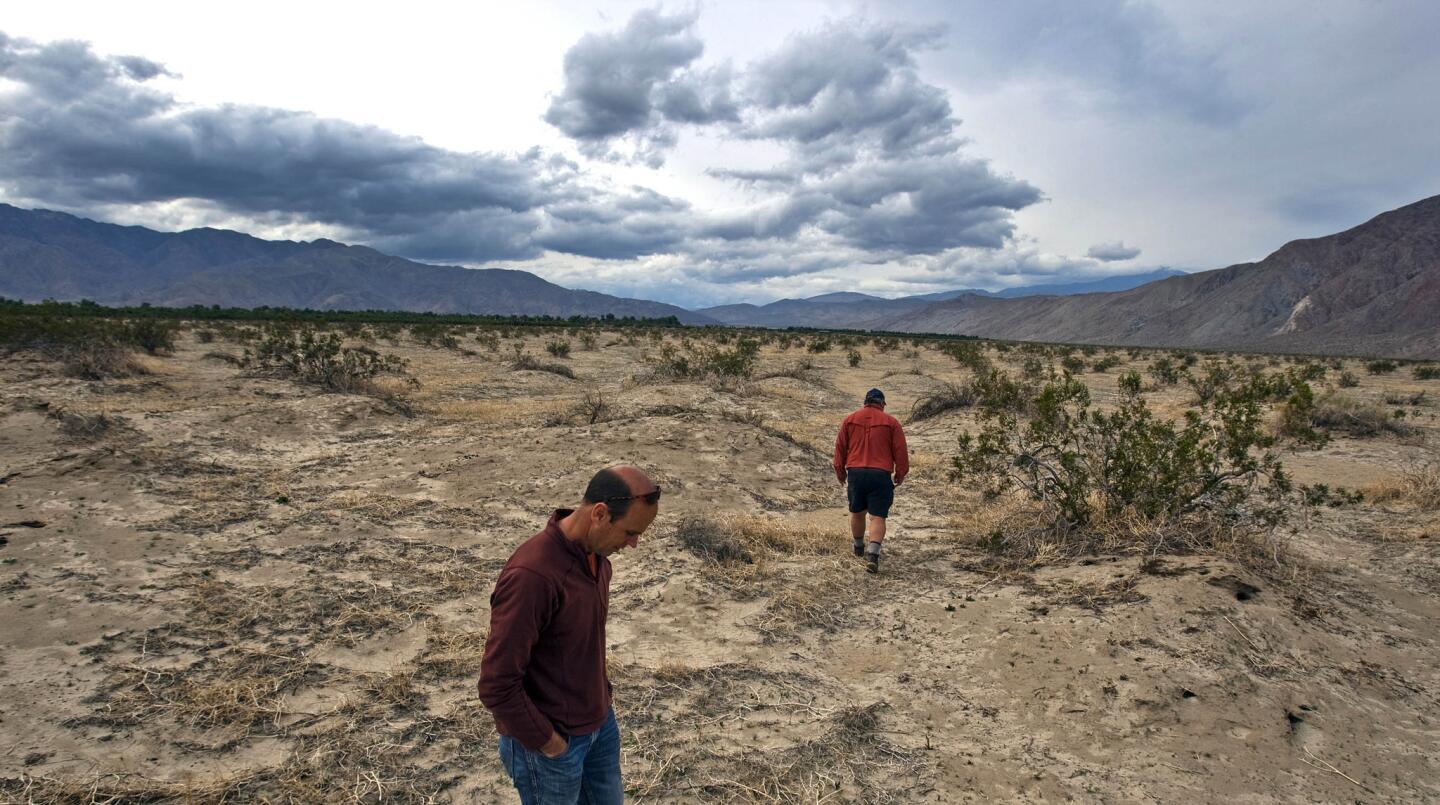
Travis Huxman, left, faculty director of UC Irvine’s Steele/Burnand Anza-Borrego Desert Research Center, left, and Jim Dice, reserve manager for the center, inspect an area of Anza-Borrego Desert State Park where crews had removed invasive Sahara mustard plants by hand. “There is so much we don’t know about this invasion and its impacts on local rhythms of life,” Huxman said. (Allen J. Schaben / Los Angeles Times)






